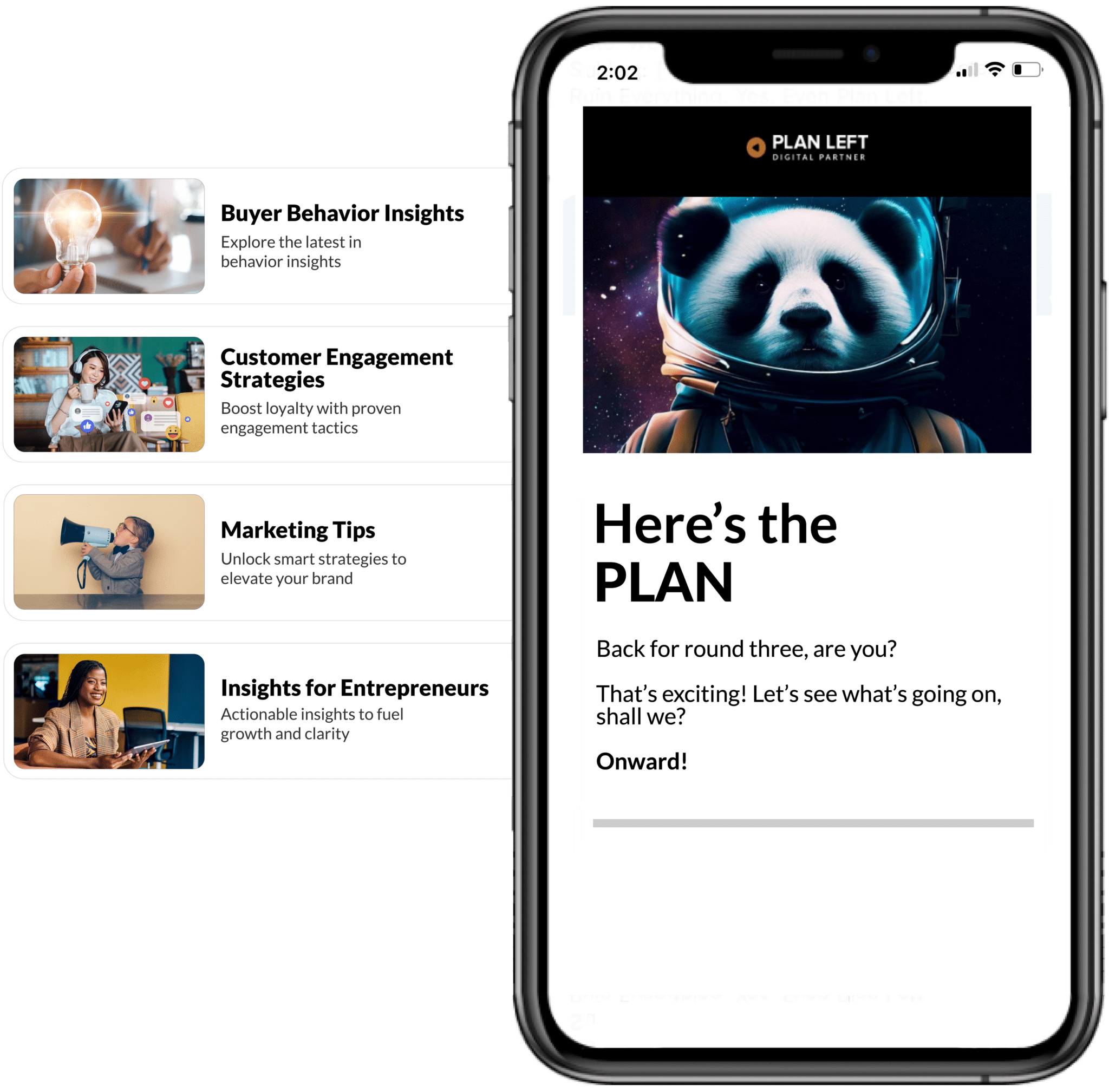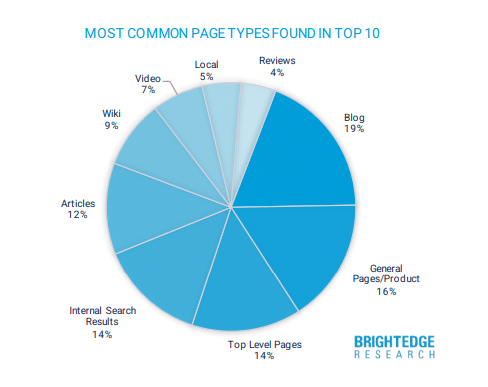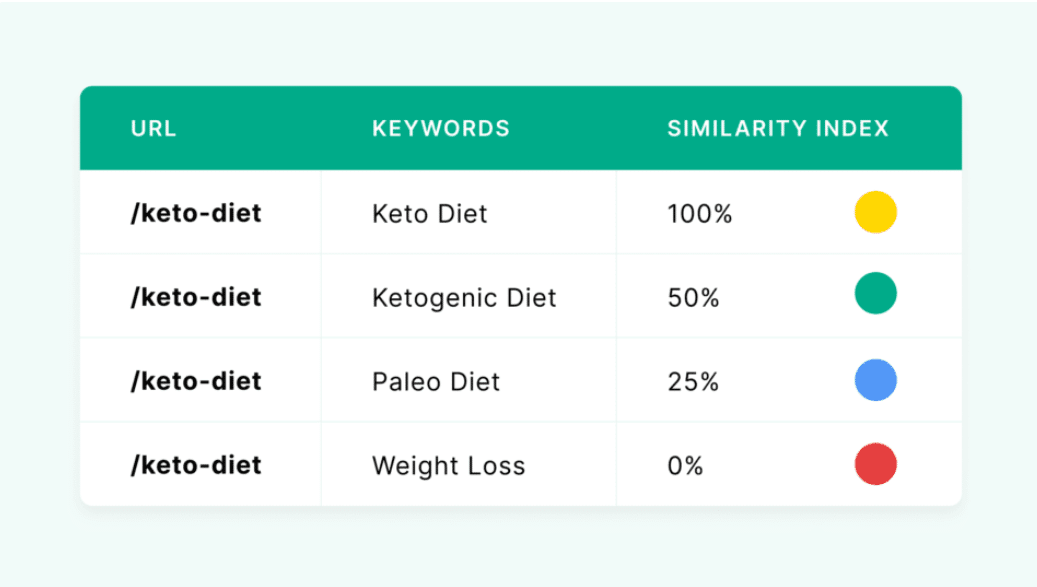
Securing top positions on Google’s search results is more than a vanity metric. It is a strategic necessity for your brands’ success. Recent studies reveal that blogs are not just surviving but thriving, often occupying the top 5 positions in Google searches. This data underscores the power of well-crafted content in driving traffic and engagement.
The Power of SERP Positioning
Recent analysis publications reveal that blogs appear in the top five Google SERP positions 23% of the time. Coupled with the compelling statistic that the first page results garner up to a 40% click-through rate (CTR), the message is clear — blogging is not just beneficial but an essential part of your brand’s success.
Failing to leverage the potential of blogging means you are losing a significant opportunity to capture audience attention and drive traffic to your site.
Crafting Blogs for Success
The true art of blogging lies in its quality and relevance. Understanding the needs of your audience, answering their questions, and providing solutions that matter are the keys to successful content. Tailoring content to align closely with your readers is a strategic opportunity using information from research and discovery:
- Audience Research: Dive into your audience’s demographics, interests, and online behavior. Google Analytics and social media insights are examples of tools that provide valuable data.
- Feedback and Engagement: Pay attention to comments, shares, and feedback on your content posts and social media platforms. What topics generate the most discussion or interest?
- Keyword Analysis: Use SEO tools to identify what your audience is searching for. Google Keyword Planner, Semrush, and other tools reveal the search terms and questions your audience is asking.
- Competitor Analysis: Look at what content is working for your competitors. What topics are they covering, and how are their audiences responding?
- Current Trends and News: Stay updated with industry news and trends. What are the hot topics or emerging issues in your field?
- Surveys and Polls: Directly ask your audience what they want to read about through surveys or polls through your website, email marketing, or social media channels.
Write for Quality, Not for Quantity
SEO and content creation is not what it once was. This change is largely influenced by updates like the Helpful Content Update, which prioritizes content that genuinely addresses the needs and queries of readers.
Tips for writing quality user-focused content:
- Understanding the Helpful Content Update: The Helpful Content Update rewards content that provides real value to the reader, moving away from keyword-stuffed, superficial articles. This update encourages creators to produce content that is genuinely useful and engaging for their audience.
- No Strict Word Count or Keyword Density: Contrary to popular belief, per Google’s John Mueller, there’s no magic number for the number of words or keywords that guarantees success. The focus should be on how well the content fulfills the reader’s intent. Whether it’s a concise 300-word post or a detailed 2000-word article, the key is that it should comprehensively address the topic and provide value to the reader.
- Quality Over Quantity: Quality content is what drives engagement and loyalty. Readers are looking for answers, insights, and information that they cannot find elsewhere. Your content should aim to meet these needs in the most effective and engaging way possible.
- Filling a Need: Every piece of content should aim to fill a specific need or answer a question that your audience has. This improves the relevance of your content but also enhances its helpfulness, which is a key factor in the Helpful Content Update.
- Engagement and Value: The ultimate goal of your content should be to engage your readers and provide them with value. This could be through informative content, answering frequently asked questions, or providing unique insights into common challenges.
Optimize Content for Maximum Impact
Integrating SEO best practices into your content strategy allows you to enhance the visibility and effectiveness of your blog posts significantly. Remember, SEO is not just about adhering to guidelines but about understanding and applying SEO measures in a way that aligns with your unique content and audience.
Here are some considerations to make when optimizing your content:
- Videos: Incorporate videos to provide a dynamic visual complement to your text. Videos simplify complex topics, add a personal touch with interviews and behind-the-scenes looks, and viewers will retain 95% of the message from your video compared to the 10% retained by reading text alone.
- Infographics: Use infographics for a visually appealing summary of data and concepts, enhancing the understanding and retention of the information you are sharing while sharing brand awareness in image searches and increasing web traffic by up to 12% (or more) by including them as part of your content strategy.
- Interactive Elements: Engage your audience actively with interactive elements like polls, quizzes, and downloadable resources. These tools not only increase user interaction but provide valuable feedback and insights into your readers preferences, making your blog a two-way conversation.
- Effective Title Tags: Titles with or without a question have similar CTRs. However, title tags between 40 to 60 characters have the highest CTR. Craft your titles within this range to maximize click-through rates.
- Keyword Strategy: Longer keywords, particularly those between 10-15 words, tend to have a higher CTR, receiving 1.76x more clicks than single-word terms. Use longer, more specific keywords to target your audience effectively.
Image Source: Backlinko, Google CTR Stats
- URL Optimization: URLs containing terms similar to the target keyword have a 45% higher CTR compared to those that don’t. Make sure your URLs are descriptive and keyword-rich but also align with the keyword(s) related to the content.
- Positive Sentiment in Titles: Titles with a positive sentiment can improve CTR by approximately 4%. Use positive language in your titles to attract more clicks.
Navigating the Path to Top Google Positions
Achieving top positions in Google’s search results is a blend of art and strategy. It requires an understanding of your audience, a quality of quantity strategy, and a keen eye for SEO trends. Whether you’re looking to augment your team or for content writing services, Plan Left has the experience you can leverage for your brands’ success. Reach out today, and let’s build your strategy for success together.
Explore Latest Posts
Accessibility has evolved from a nice-to-have feature into a fundamental business requirement. Organizations that treat accessibility as an afterthought often ... read more
July 14, 2025
Your lead magnet has successfully attracted hundreds of downloads—but where are the sales? This disconnect between lead generation and revenue ... read more
July 10, 2025
Every click, every input, every submission tells a story. For users with disabilities, website forms can be either welcoming gateways ... read more
July 9, 2025
Essential Strategies for Entrepreneurs
Get Actionable Business Insights & Marketing Tips
Our newsletter delivers real-world strategies from entrepreneurs who’ve been exactly where you are.
Sign up now for:
- Actionable growth strategies that work
- Insider tactics for attracting top talent
- Real-world case studies from successful founders
- Emerging tech trends that drive innovation
- Pragmatic marketing approaches for visionary leaders






